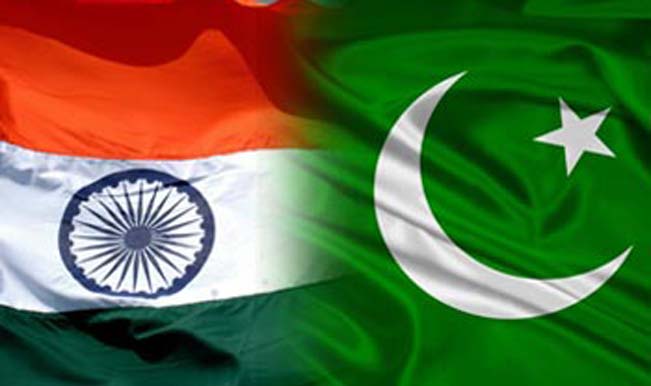India and Pakistan are today no longer the biggest threats to each other, writes an Indian economist on the occasion of Pakistan Day
Since partition in 1947, India and Pakistan have gone to war four times, three times over the Kashmir issue and in 1971 during the Bangladesh liberation war. From India’s point of view, Pakistan initiated the aggression each time, including the tragic 1971 war that led to the loss of half the country. The view in Pakistan may be different.
Both sides claimed contentious victory in the war of 1965, that each glorifies. Since then, Pakistani politicians have played up the perception of an Indian threat. An era of India-bashing during political rallies became fashionable, just as Indian politicians engaged in the oral shelling of Pakistan to score brownie points during Indian elections.
These are alarming developments, particularly since the two nations created from the same soil have emerged as nuclear powers. Contrast this to the appalling poverty rates in both countries, where millions of people face the most basic roti, kapada aur makaan (bread, clothes and house) issues.
As an Indian who wants peace, I appeal to every intellectual Pakistani to question whether this threat of India is a reality or fabrication. This perceived threat has gained ground particularly since former Prime Minister Zulfikar Ali Bhutto’s famously proclaimed that Pakistan would eat grass if necessary in order to be a nuclear power (“hum ghass khanege magar hum bhi nuclear power banege”), following India’s first nuclear test in May, 1974. Coming less than three years after Pakistan lost East Pakistan, this contributed to an atmosphere of fear and uncertainty about the possibility of India taking over all of Pakistan and threatening its very existence.
I also appeal to every intellectual Indian to introspect about the real threat to India. Does it really lie across the border? Yes, militant attacks on India have originated in Pakistan, but these militants also attack targets in Pakistan, where over 50,000 civilians and over 10,000 armed forces personnel, including officers, have been killed over the past decade. But a greater threat to India lies within its borders, in the militant Hindu organisations that are determined to turn secular India into a Hindu Rashtriya (Hindu state).
Two nation theory
The ‘two nation theory’ is based on the idea that Hindus and Muslims in the Indian subcontinent are two distinct, different nations with their own social order, culture, language, literature, customs, philosophies and civilisation. It sees these two communities as being basically antagonistic to each other and therefore unable co-exist peacefully under a single united India. This was advanced as the reason behind the creation of a separate Muslim homeland in the subcontinent known as Pakistan.
What many in Pakistan may not realise is that Hindu extremists also believe in the two nation theory. They want Hindus to rule ‘Hindu’ India while Muslims govern ‘Muslim’ Pakistan.
Fear mongering
Many in Pakistan see India’s Hindu militants as a threat to Pakistan, for example, the Rashtriya Swayamsevak Sang (RSS), Vishva Hindu Parashad (VHP) and the Bajrang Dal. However, this fear mongering in Pakistan is not based in reality.
In actual fact, the Hindu extremist forces pose no threat to Pakistan because as mentioned above, they also believe in the two nation theory, and share the idea that Hindus should rule Hindu India and Muslims should rule in Muslim Pakistan.
The existence of Pakistan is critical to their cause of turning secular India into a Hindu Rashtriya. Their logic is that since Muslims have an Islamic republic in Pakistan, Hindus should have their own Hindu republic as well. The state of Pakistan is in fact a source of inspiration for them. They use Pakistan’s Sharia law to argue for an Indian constitution based on the manusmriti (law of Manu).
These organisations are thus more of a threat to the secular Indian republic than to Pakistan. For example, Hindu extremist groups like the Akhil Bharatiya Hindu Mahasabha observe India’s Republic day as Black Day, as they are against the secular Indian state and the tricolour flag. The only colour they want on the Indian flag is saffron which will never happen as long as Indians guard their constitutional values with their lives.
The only problem these extremist groups have with Pakistan is that all the Muslims of India did not go to Pakistan. So clearly, they have no interest in taking over Pakistan. Even if Pakistan wanted to join the union of India, these organisations would never accept it for the simple reason that they do not want to live with Muslims. They want Muslims to have a separate state thus strengthening the two nation theory and giving reason for the existence of Pakistan.
So how can Pakistan be threatened by such organisations just because they are Hindu extremists? It is actually India that should be worried about these groups that endanger its core secular moral values.
The enemy within
The two nation theory is actually threatened more in Pakistan than anywhere else by the sectarian violence, attacks and persecution of non-mainstream Muslim communities. This makes Pakistani Muslims feel unsafe in their own homeland thus questioning the monolithic identity of a Muslim nation as captured in Allama Iqbal’s poem “Jawab-e-Shikwa” where he wrote:
“Yun toh Syed bhi ho,Mirza bhi ho, Afghan bhi ho, tum sabhi kuch ho, baton ki tu Musalman bhi ho” (You call yourself Syed, Mirza and Afghan, you are everything but are you even Muslim?)
Only with a strong, united community can there be a strong nation of Pakistan. Until then disunity within Pakistani Muslims as well as non-Muslims will continue to weaken the state.
Terrorist organisations in Pakistan such as Lashkar-e-Tayyaba, Jaish-e-Mohammed and Tehreek-e-Taliban are engaged in trying to capture power in Pakistan and turn it into a ‘Muslim’ state according to their own extremist interpretation of Islam. Such groups emerged from the first Afghan war when Pakistan’s security establishment was engaged in cultivating Muslim fighters in the war against the USSR in Afghanistan. The militants are now trying to radicalise the Muslim youth and threaten the civilian government and establishment of Pakistan. Today the greatest enemies of the establishment of Pakistan lies within Pakistan itself.
It is important to remember that the white portion of the Pakistan flag represents minorities in Pakistan. The founding father of Pakistan, Quaid-e-Azam Muhammad Ali Jinnah had envisioned a liberal, secular, Muslim-majority nation. Sadly, radical conservative Islamic forces are busy trying to hijack his dream. The Pakistan of today should strive to be the state that Quaid-E-Azam had envisonised when Pakistan was created in 1947. Jinnah’s Pakistan clearly has no space for such radical Islamic ideologies.
India and Pakistan are today no longer the biggest threats to each other but elements within them threaten the national foundations of both nations. The mainstream segment of both societies must work together to neutralise such radicalisation and extremism.
Happy Pakistan Resolution Day! Pakistan Zindabad! Let’s move forward in peace.
Anish Mishra is an economist and writer currently based in Singapore. His key research interests include South Asia Economics and Geopolitics, Monetary Policy, Agriculture, Climate Change and International trade.Email: [email protected]












